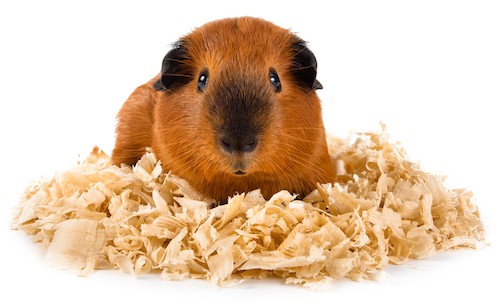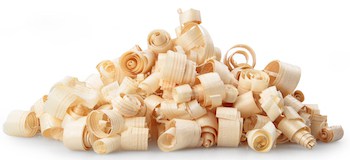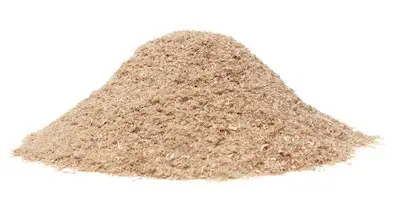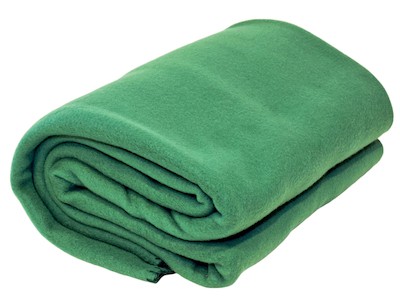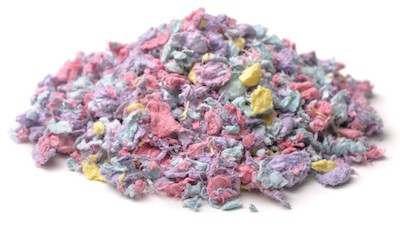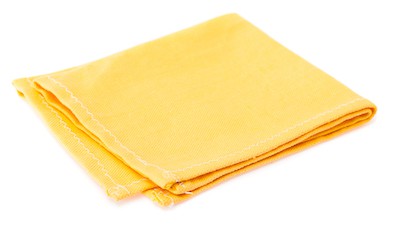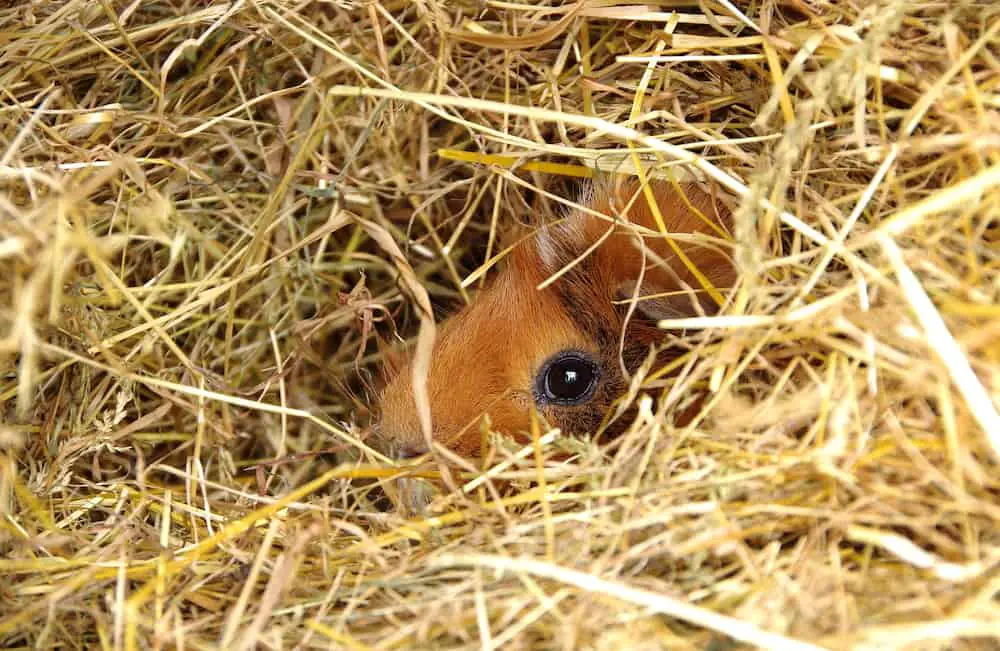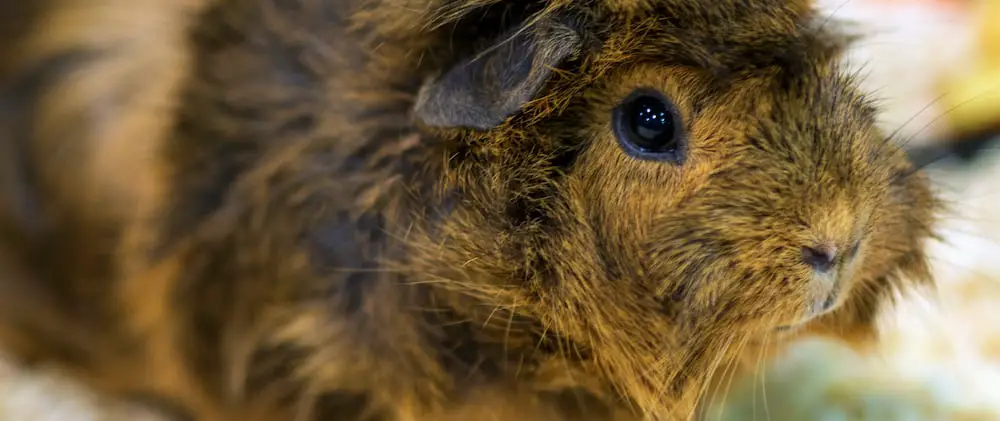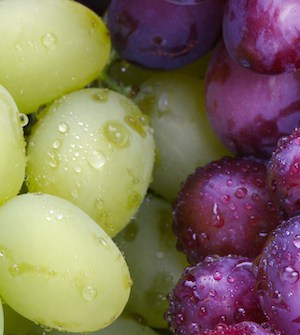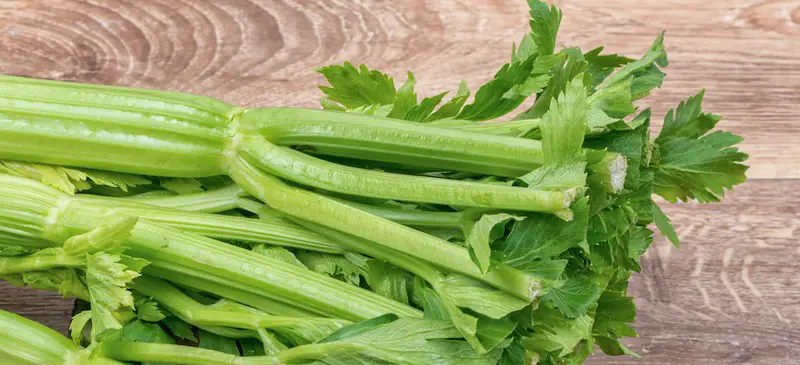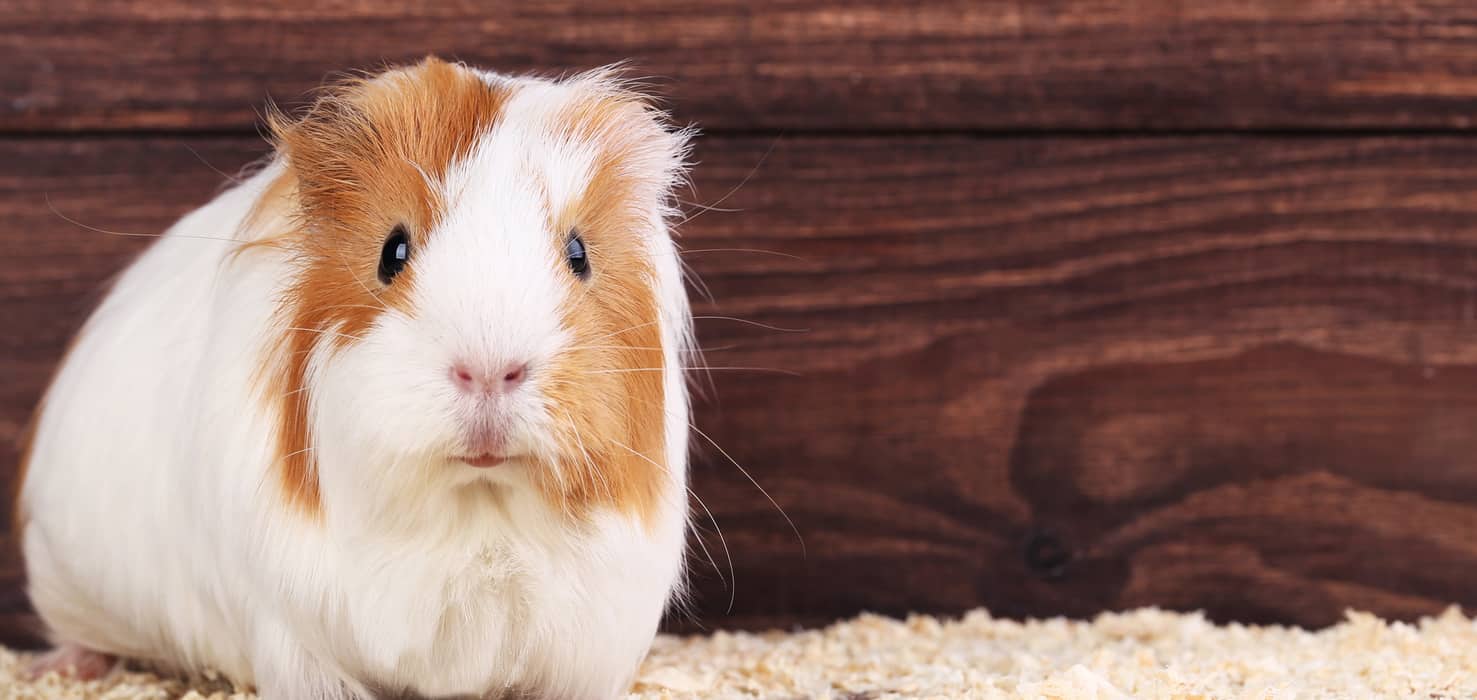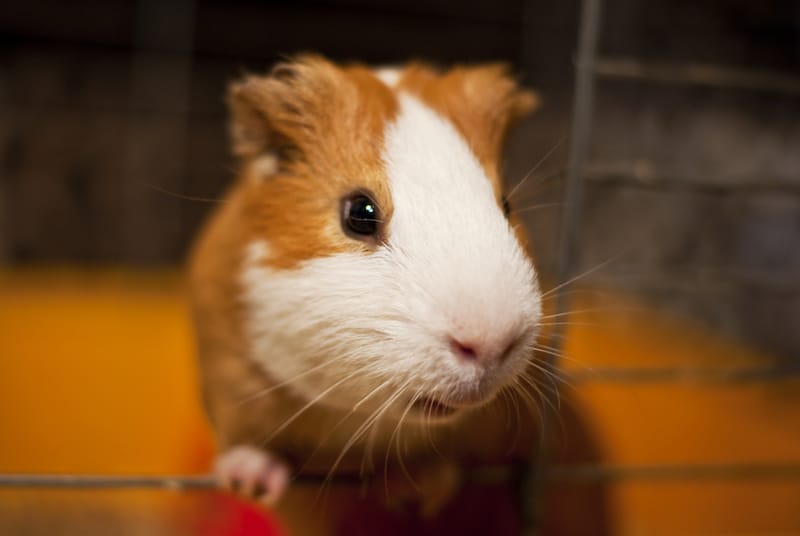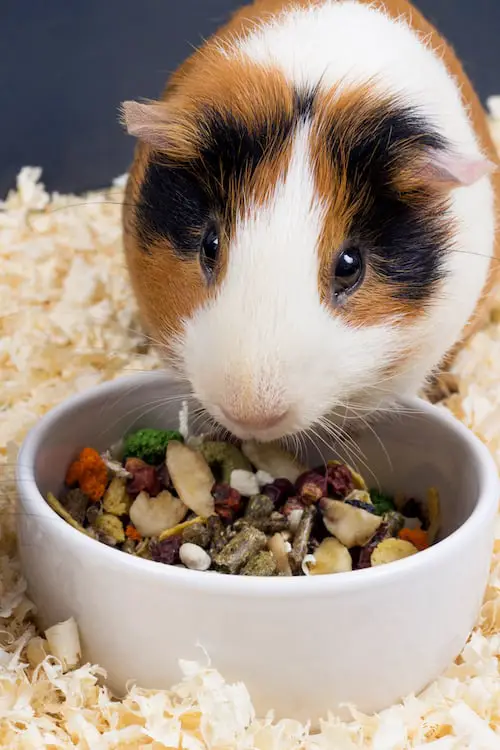If you've owned a pet before, you probably can agree with me — in most homes pets are taken in as part of the family.
Fed, bathed and given a warm, comfy area, you want to make your pet feel at home. What is abetter way to do that than to give them a comfortable and suitable bed?
Although you don't want to break the bank when it comes to purchasing the perfect product, you might notice that beddings for guinea pigs can get a bit pricey.
However, before you are alarmed, there are a few things you should be aware of that can help you not only choose the features that are specifically set for your guinea pig (which can help you estimate the price range) but also weed out the beddings that are not as suitable for your particular guinea pig.
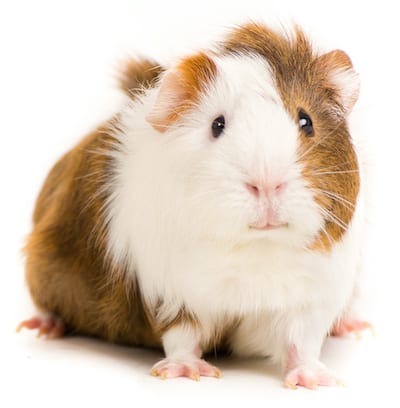
Here's what's coming up:
*PetitePetsWorld strives to be a valuable resource for pet owners. We select and review all products independently; however, we may earn affiliate commissions when you buy through links on our site.
Best Bedding for Guinea Pigs - TOP 3 in 2021
GuineaDad Fleece Liner 2.0
Key Featutes
- Highly absorbent - takes up to 3x its weight in water
- Transfers moisture away from the surface
- Waterproof backing to prevent messes
- Patterned fleece that stops the filling from shifting.
- Made from bamboo, which is safe to use and non-toxic
- Environmentally friendly - 100% biodegradable bamboo fiber
- Promotes pet health -anti-fungal, anti-bacterial, and anti-microbial
Summary:
The GuineaDad Liner 2.0 is made from bamboo fiber and is super-absorbent. It is also available in different sizes. Furthermore, if you believe in using products that are environmentally friendly and promote conservation, then this liner is perfect for you.
The bamboo fiber liner is not only safe to use for both you and your pet, but it is also reusable. It creates less waste compared to other lining products.
But that doesn't mean that the product compromises on cleanliness. It is anti-microbial and anti-fungal/bacterial, which protects your pet from health complications like bumblefoot and UTIs.
The product is also easy to use and clean with its patterned fleece. The pattern helps keep the filling in place when it is moved or lifted. The liner also has a waterproof bottom, which means there is little to no leakage in your pet's cage.
The GuineaDad liner includes a pocket that is designed to allow your pet to burrow and cuddle. The fleece liner is not only comfortable but is safe as well since it keeps the cage dry and clean.
Another added bonus of using this product is that it is easy and hassle-free to maintain. You can keep it clean by spot cleaning daily and throwing it into the wash once a week. Quick, easy, and hygienic!
All things considered, this product is an exceptional choice for guinea pig cage liners. It offers features that no other product on the market has, like anti-microbial qualities, and some even call it the Rolls Royce of cage liners. That has got to count for something.
Pros
+ Hypoallergenic and safe to use for pets and pet owners
+ Environmentally friendly and leads to less waste
+ Extra-absorbent to keep the cage dry
+ Has a pocket for increased pet comfort
+ Great odor control
+ Easy to clean and maintain
+ Available in different sizes
+ Machine washable
+ Oversized to compensate for initial shrinkage
Cons
- May start to smell if not properly cleaned
- Needs daily spot cleaning
Kaytee Clean & Cozy White Small Animal Bedding
Key Featutes
- Paper fibers can absorb 6x their weight
- The bedding is 99.9% dust-free
- Has excellent odor control
- Soft and fluffy
- Encourages burrowing
Summary:
Almost all guinea pig owners are aware of the importance of proper bedding. Clean and hygienic beddings can help save small pets from health problems like urinary tract infections (UTIs), bumblefoot, and even respiratory tract infections that can result from ammonia build-up.
Kaytee Clean and Cozy Small Animal Bedding not only helps in keep your pet's cage dry, but it also prevents odor build-up. It also keeps ammonia levels down, which is essential for a guinea pig's respiratory health.
Animal bedding produced by Kaytee is made from FDA approved paper and is 99% dust-free. The paper fiber used in the bedding is up to 20 times more absorbent than other brands. Now, that’s not something you hear every day!
The product is available in different sizes, starting from 12.3 Liters to 85 liters. It is also extremely easy to use. All you have to do is cover your pet's habitat with the soft paper fibers, at least 3 inches in-depth, and you are good to go. The paper bedding is also easy to remove and needs to be changed weekly only.
Lastly, the bedding is also available in different sizes and colors to add some color to your pet's habitat.
Pros
+ Extra absorbent paper fibers
+ Odor control guarantee
+ It is extremely easy to use
+ 99% dust-free to prevent respiratory problems
+ Keeps the cage dry and odor-free
+ The paper fibers are soft and fluffy to allow burrowing
+ FDA approved material
Cons
- Creates more waste as compared to liners
Carefresh Small Pet Bedding
Key Featutes
- Unique odor control formula
- Special fibers are 2x more absorbent than wood shavings.
- Is made from natural, reclaimed fiber that is soft and fluffy
- Made from biodegradable and sustainable materials
- Low-dust bedding
- The product comes in different colors and sizes.
Summary:
Carefresh products are highly recommended by not only cavy-owners but also other small-pet owners as well. The Carefresh Small Pet Bedding is no different. It is made from natural, reclaimed fiber that’s safe for all types of small pets to use.
It has all the benefits any good quality pet bedding should have, such as long-lasting odor control. In fact, Carefresh guarantees odor control for up to 10 days. That’s nothing short of amazing!
The fibers are also highly absorbent and actually twice as absorbent as wood shavings. This bedding will keep the cage dry and protect your guinea pig from health issues caused by moisture.
Apart from all that, the bedding is easy to use and dispose of. The bedding also protects your pet’s health from problems like respiratory infections because it's low-dust and controls ammonia build-up. To add some charm and color to your pet’s habitat or cage, the bedding is available in several sizes, textures, and colors.
Also, the fluffy bedding helps in putting your cavy at ease by allowing it to burrow and nestle. Carefresh recommends changing the bedding once a week or when the bedding feels tough and has reached its maximum capacity in absorbing urine.
Overall, it is an excellent product for all cavy-owners to use, not only because of the benefits listed above but also because its soft fibers protect your piggie’s sensitive feet much better than wood shavings.
Pros
+ Natural fibers are lightweight and easy to use
+ It is 2x more absorbent than wood shavings
+ It offers long-lasting freshness and odor control
+ Environmentally friendly
+ Safe and easy to keep clean
+ Encourages burrowing
+ Low-dust to prevent respiratory problems
+ Many colors and sizes
Cons
- Creates more waste than liners
- Not 100% dust-free
Things to Consider When Choosing
Guinea Pig Bedding
To help you pick out the best bedding, there are a few features for you to consider that can help you sort out which type of bedding is best for your guinea pig pal.
A few questions you should ask yourself as a guinea pig owner before buying a particular product are:
1. Does it absorb urine well?
2. Does it do anything against bad odors?
3. Does it mimic the feel and material of the natural habit of a wild guinea pig?
4. Is it natural and healthy for a guinea pig?
5. Is it dust- or chemical-free?
You can check for the answers to these questions not only in the general information of the packaging but also in reviews of each particular product.
Some other aspects of guinea pig bedding for you to consider also include:
- The Size of the Bedding
The size of the bedding also relates specifically to the size of your guinea pig and also its enclosure.
Not only do you need a big fluff of bedding for your pet to sleep on, but you'll also want to fill the bottom of the cage with loosely-packed bedding to feel comfortable.
However, you also don't want to overflow your guinea pig's cage, which can not only make them feel overwhelmed but also give you more to clean up.
The general rule here is to make the size of the bedding about twice as large as your pet at its biggest size.
- The Color of the Bedding
Although you may choose the color of your quilt or bed because of aesthetic reasoning, choosing a particular color of your guinea pig's bed can be helpful for you.
If you choose light-colored bedding, this can help you visually see when it's wet and needs to be changed.
You also might want to consider the color of it to be as visually similar to your guinea pig's natural habitat, so they feel comfortable and at home.
- The Type of Guinea Pig
Each guinea pig is different when it comes to type, which can mean that your pet will either prefer a drier environment rather than a moist one perhaps found in the wild.
Play around with hay, wood pellets, and other bedding material to find which materials are best for your particular guinea pig.

FAQ on bedding for guinea pigs
Whether you're a first-time guinea pig owner or have cycled through fifty of them, here are a few of the more frequently asked questions about guinea pig bedding, answered:
We hope this article has provided you with more than enough information to help you find the right bedding for your guinea pig.
*Disclaimer: As an Amazon Associate we earn from qualifying purchases. That means we receive a small commission from Amazon if you should decide to purchase a product through our link - but don’t worry, you won’t be charged any extra for it.
We only recommend products we truly believe are of value to you, and we believe in ourselves. Our goal is to make this site a truly valuable resource for all pet owners.
